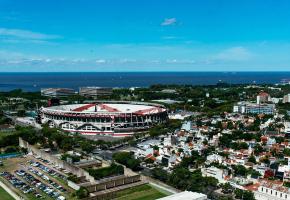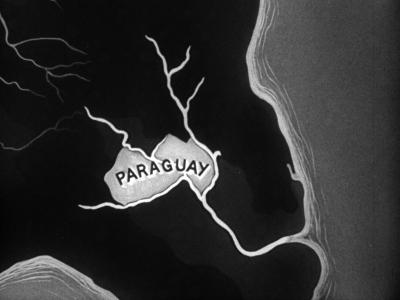Heritage
Historically, in the mid-19th century, immigrants poured into Argentina from Spain, Italy, Germany and Eastern Europe. As a consequence, BA’s population grew more than sevenfold from 1869 to 1895. Today it is, astoundingly, home to a third of the country’s population. European influences are visible in many aspects of BA – from the architecture, to the restaurants, to the museums that testify how the city came to be such a melting pot. Unsurprisingly, BA is sometimes referred to as “the Paris of South America”. It is the fashion capital of the continent, but such a nickname goes beyond this - there is an elegance about BA, one akin to that which lines the Parisian streets, and one which, I think, is noticeable from the moment you leave Ezeiza airport.
As for the porteños (residents of BA) themselves, their laidback attitude contrasts with the buzz of their dynamic city. That’s not to say that they are short of personality – far from it. Fun, fiery, opinionated, and passionate - every porteño is proud to be aporteño. And who can blame them? Their city boasts beautiful squares and leafy parks, in addition to its numerous shopping centres and world famous nightlife.

The Cityscape
Allow me to map out the various barrios (districts) of BA. The hustle of the city culminates in the Microcentro: a hub of commerce characterised by business suits, blackberries and tall office blocks. Situated just south of here are the narrow, cobbled streets and low-story colonial buildings of San Telmo. The heart of this barrio is Plaza Dorrego, which hosts San T’s renowned Sunday antiques market.
Congreso, west of the Microcentro, tends to be quieter thanSan Telmo. It features a mix of cinemas, theatres (the most famous is Teatro Colón) and political monuments. The governmental offices are located in the Casa Rosada (‘Pink House’ – quite literally), which backs onto Plaza de Mayo. It is from the balconies of this building that Juan and Eva Perón, General Leopoldo Galtieri, and Raúl Alfonsín preached to throngs of impassioned Argentines during times of political and economic hardship.

Such times took their toll on the Argentine capital, resulting in a wide range of social circumstances. Naturally, this range can be seen across the barrios. In spite of being home to La Bombonera football stadium, parts of La Boca neighbourhood are run-down and impoverished. At the opposite end of the economic spectrum is Recoleta, BA’s most exclusive neighbourhood, where the wealthiest citizens reside. The popular tourist attraction here is El Cementario de la Recoleta. Its crypts hold the remains of Argentine elite: past presidents, military heroes, influential politicians, and an array of celebrities. Its size and layout render it quite a labyrinth, but Evita’s tomb is usually easy to find – a substantial crowd of people frantically snapping away will likely be a sign.
Not to be outdone by Recoleta, more of BA’s expensive real estate graces Puerto Madero. Once an old waterfront, it’s now prime strolling territory – not just for aesthetic reasons, but for its selection of restaurants, particularly parrillas (steak houses). And believe me when I say the steaks served by them are serious. You won’t be able to consume anything else, not even dulce de leche, for quite some time afterwards.
At last, we meander to Palermo Soho, one of the trendiest areas in the city. It is frequented in the day for its boutiques and cafes, and at night for its multitude of bars and clubs. One of its busiest squares is Plaza Serrano, which is always filled with people kicking back with a Quilmes (the closest thing you could call Argentina’s national beer), before moving on to a club circa 2am. Porteños don’t hit clubs much earlier, and don’t leave much before 6am. Clubs such as Crobar, Museo, and Pacha have a capacity of up to 1000 people, so expect big bars and even bigger dancefloors. Reggaeton, a form of Latin urban music, dominates the clubbing scene; it’s a blend of reggae, salsa, latin pop and hip hop. Whether it’s pumping out of a DJ booth or a car radio, the energy of this music is indicative of that channelled throughout the city. Buenos Aires demands a visit - but if you want to make it back to Britain in one piece then don’t mention the Falklands war. En serio.

How to get There:
Air Europa offers convenient one-stop service via Madrid. Flights depart from London Gatwick and connect in Madrid before continuing to Buenos Aires’ Ezeiza International Airport (EZE) aboard Air Europa’s Boeing 787 Dreamliner. More info here

















